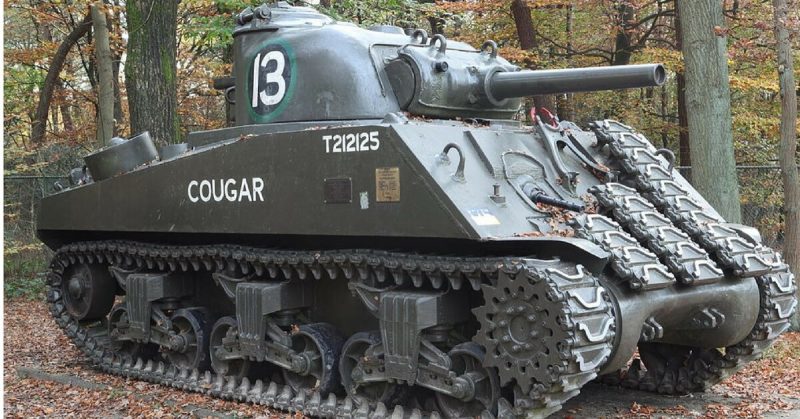Perhaps the most iconic American tank in history, the M4 Sherman medium tank, remains the trademark of WWII.
Since it was relatively cheap and easy to produce, but on the other hand reliable and very useful in combat, it became the most produced tank of the U.S. Army in the Second World War.
The Sherman was also used by other Allies and the Soviet Union through the lend-and-lease program of the U.S. government.
Approximately 49,234 were built in a period between 1941 and 1945.
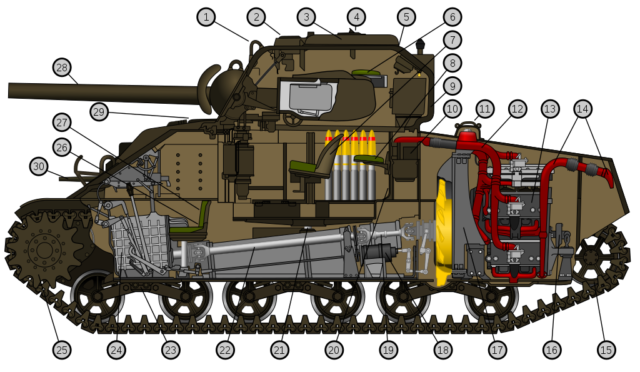
The Sherman was designed in 1940 and entered production the following year. The version that was the most common was armed with a 75 mm M3 L/40 gun and supported by a .50 cal Browning machine gun, accompanied with two more .30 cal machine guns, one in the turret and one in the hull.
This firepower was mainly used to support infantry attacks in combined actions. The tank’s armor was 93 mm (3.7 in), or 118 mm (4.6 in) in an improved version which utilized the 76 mm gun.
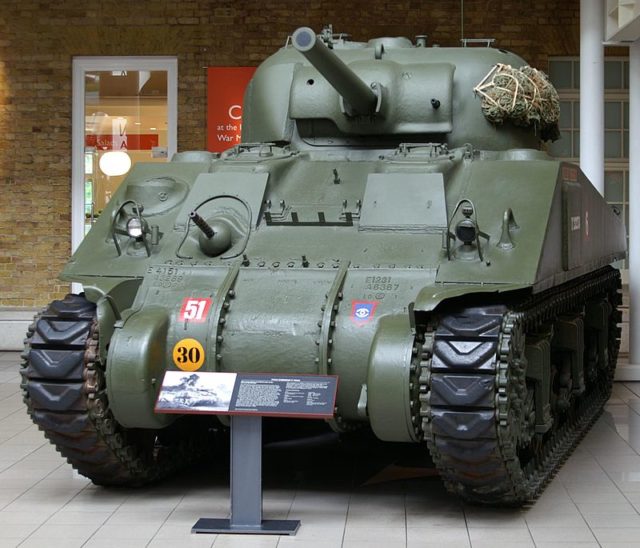
Sherman’s role on the battlefield was aligned with the famous U.S. military doctrine that prevented the production of heavy tanks during the first half of the war.
The doctrine dictated that only the tank destroyers, such as Hellcat, were to engage the German medium and heavy Panzers.
The Shermans were not advised on engaging in direct conflict with German heavy armor, for they were considered weaker.
Instead, they counted on numerical superiority, anti-tank guns, and tank destroyers.
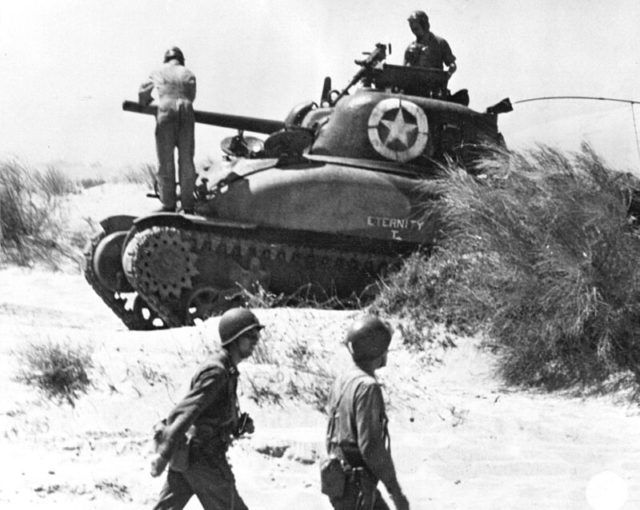
Sherman tanks first saw combat in north Africa. The desert proved to be a difficult terrain, but the M4 tanks had been equipped with sand shields over the tracks and other storage.
This was where it became apparent that the 75 mm gun was no match for the Tiger I tank which was prowling across the African theater of war.
Thus, the tank destroyer doctrine came into effect. Even though it was a solid tank, it was advised to avoid confrontation with superior armor.
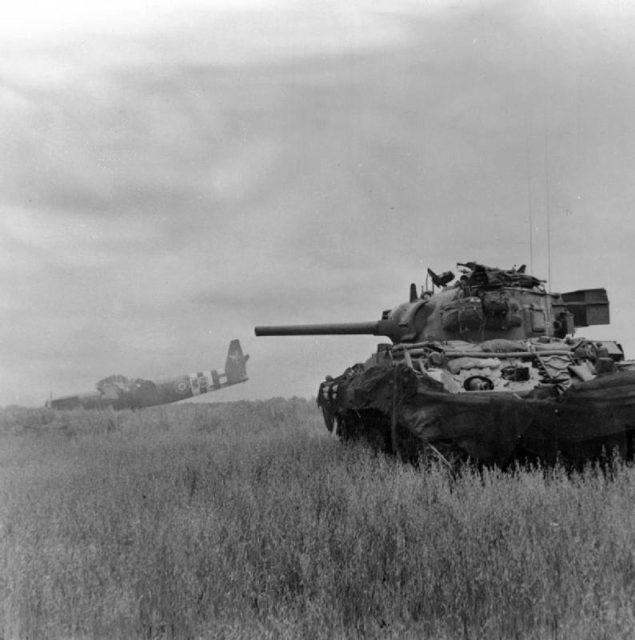
On the other hand, the Japanese models earlier models, such as the Type 95 Ha-Go and the Type 97 Chi-Ha proved to be inferior to the Sherman.
It was not until the development of Type 3 Chi-Nu did the American M4 met its match. Both tanks had the same caliber gun ― 75 mm ― but the Japanese medium tank utilized a much lighter armor.
In the summer of 1944, when the Allies disembarked on the beaches of Normandy and launched a second front in Europe, the Sherman spearheaded the rapid advance that liberated France in three months time.
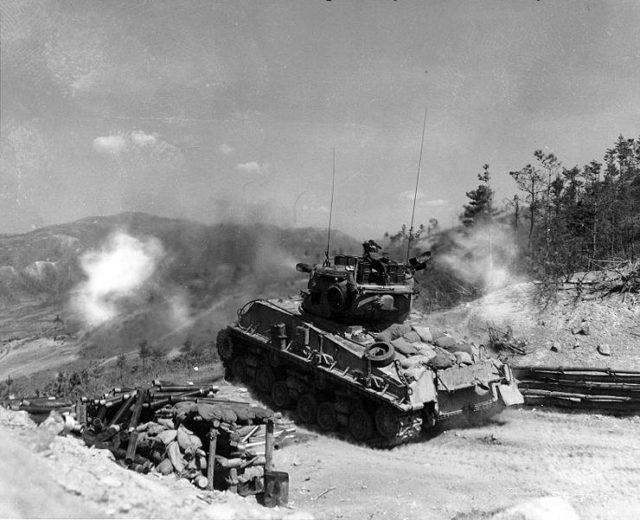
After the war, the M4A3E8 armed with an improved 76 mm gun served in Korea together with the 105 mm M4 howitzer, where it encountered another iconic WWII tank ― the T-34-85.
The Sherman was easily comparable with the Soviet tank, and both were almost equal in terms of firepower and armor.
After the Korean campaign, the M4 was retired in the American Army, but continued to serve elsewhere ― from China to Israel, from Netherlands to South Africa, this tank saw extensive service.
Since a large number of American Shermans was sold to developing countries after the war, it served in more than 50 armies worldwide.
